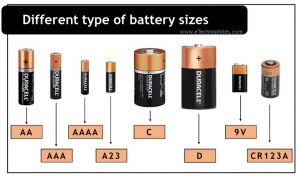Last updated on April 5th, 2024 at 06:20 pm
Batteries are available in numerous sizes and each one is designed to meet a specific purpose. Some of the popular battery sizes are AA, AAA, 9V, CR2032 (coin cell), etc. These sizes are standardized by IEC (International Electrotechnical Commission). In this article, we will discuss different battery sizes and their applications.
The fundamental parameters of the battery sizes and the comparison between them are given in the table below.
| Cell Size | Nominal Voltage | Shape | Dimensions (in mm) | Weight (NiMH grams) | Battery Chemistry | Other Denominations |
| AA | 1.5V | Cylindrical | D:14.5 H:50.5 | 26 | Alkaline, Lithium, Lithium Ion, NiCd, NiMH, Carbon Zinc | LR6, R6, FR6, HR6, KR6, ZR6 |
| AAA | 1.5V | Cylindrical | D:10.5 H:44.5 | 13 | Alkaline, Lithium, Lithium Ion, NiCd, NiMH | R03, AM4, MN2400, SP/out, mic, KR03 |
| AAAA | 1.5V | Cylindrical | D:8.3 H:42.5 | 10 | Alkaline, Lithium Ion, NiCd, NiMH, Carbon Zinc | LR8D425, 25A |
| A23 | 12V | Cylindrical | D:10 H:28.2 | 8 | Alkaline | 23AE, GP23A, V23GA, LRV08, 8LR932,8LR23, MN21, L1028 ANSI-1181A |
| C | 1.5V | Cylindrical | D:26.2 H:50 | 72 | Alkaline, Lithium, NiMH, Carbon Zinc | LR14, R14, AM2, MN1400, SP/HP11, Baby |
| D | 1.5V | Cylindrical | D:34.2 H:61.5 | 140 | Alkaline, NiCd, NiMH, NiOOH, Carbon Zinc | LR20, AM1, R20, MN1300, SP/HP2, Mono, KR20 |
| 9V | 9V | Rounded rectangular prism | L:48 W:25 H:15 | 43 | Alkaline, NiCd, NiMH, Lithium Ion, Carbon Zinc | 6LR61, 6F22, 6KR61, 6HR61 |
| CR123A | 3V | Cylindrical | D:17 H:33.4 | 17 | Lithium, Lithium Ion | Camera battery, 2⁄3A, 123, CR123, 17345, 16340, , CR17345, 5018LC |
| CR2032 | 3V | Coin | D:20 H:3.2 | 3 | Lithium Ion | 5004LC |
Now let us discuss each cell in a bit more detail.
Note: For every specific size, the nominal voltage, capacity, and even dimensions slightly vary depending on the battery chemistry and manufacturing brand.
Table of Contents
AA battery
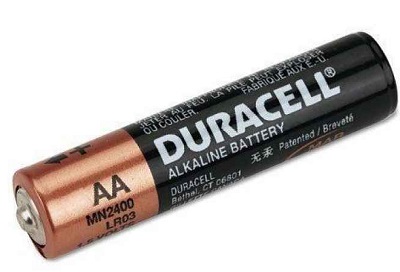
AA batteries are also known as Double A batteries. It has some other technical names among which LR6 is the most popular. AA size battery comes cylindrical. These are the most preferred battery sizes for household requirements and are thus widely available in almost all stores around us.
Both primary and secondary batteries are available in AA size. Alkaline batteries, Lithium, Lithium Ion, NiCd, NiMH, and Carbon Zinc are available in AA dimensions. However, the dimensions may vary slightly based on the chemistry. These batteries produce a nominal voltage of 1.5V.
What does A in an AA battery mean?
The letter A in an AA battery refers to the size of the battery. An AA battery is 14.5mm in diameter and 50.5mm in length.
Applications
AA batteries are mostly preferred for low-current drawing devices and thus utilize minimal energy. AA batteries are commonly used in small portable devices such as remote controls, toys, thermometers, calculators, hand sanitizers, etc. These are long-lasting batteries and offer a longer shelf life. So they are the best choice for devices like clocks which are always on.
AAA battery
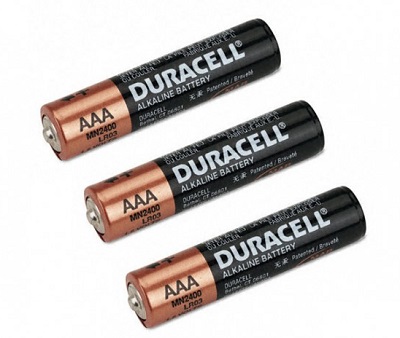
Commonly known as Tripple-A batteries, AAA batteries are smaller in size than AA batteries. The other technical terms for AAA batteries include R03, AM4, MN2400, SP/out, mic, KR03, etc. Like AA batteries, AAA batteries are also cylindrical. These are also common in stores and largely used in household devices.
What is the difference between AA and AAA battery?
The AAA batteries are smaller in size than AA batteries. The AAA battery is 10.5mm in diameter and 44.5mm in length. These batteries have less capacity than AA batteries and are cheaper than AA batteries.
AAA batteries are available in both primary and secondary categories. It includes the battery chemistries such as Alkaline, Lithium, Lithium Ion, NiCd, and NiMH batteries. The dimension may also slightly differ among these types. The nominal voltage is 1.5V.
Applications
The major applications include clocks, calculators, toys, cordless phones, TV remote controls, and other common household devices that require smaller cells. However some brands design these AAA batteries for high drain devices and are called Procell INTENSE Power batteries.
AAAA battery
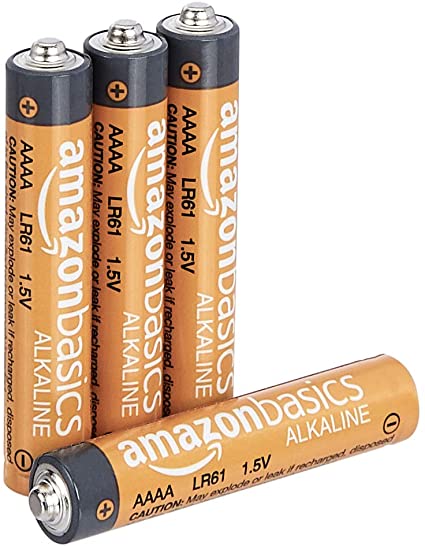
Often called Quadruple-A batteries, AAAA size variants are also cylindrical, but much slimmer in size than AA and AAA sizes. These batteries are also known as LR8D425 and 25A batteries.
How is an AAAA battery different from AA and AAA batteries?
It is smaller in size as compared to the other batteries (AA and AAA). Although it offers the same nominal voltage of 1.5V, the power delivery is very high compared to that of its AA and AAA counterparts.
Alkaline, Lithium Ion, NiCd, NiMH, and Carbon Zinc are usually available in AAAA dimensions. The operating temperature for this battery has an extreme range, i.e., from 18°C to 55°C. The shelf life is also very long (up to 10 years).
Applications
Devices like Bluetooth headsets, penlight-style torches, glucose meters, hearing aid remote controls, powered computer styluses, and laser pointers usually opt for AAAA-size batteries. These batteries are not very common in stores.
A23 battery
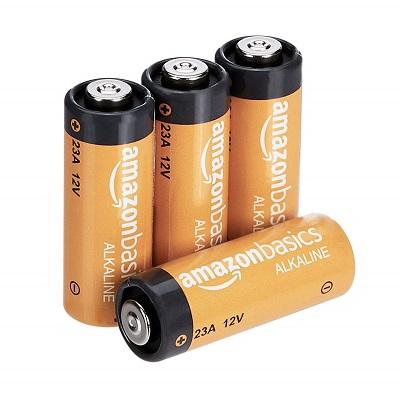
A23 is another type of cylindrical battery that offers a greater nominal voltage (12V). These are Dry-cells that are made by combining eight LR932 cells. Only alkaline batteries are manufactured in A23 battery size and are rechargeable and disposable.
The other technical terms for A23 size are 23AE, GP23A, V23GA, LRV08, 8LR932,8LR23, MN21, L1028 ANSI-1181A.
Applications
A23 batteries are mainly used in homes, shops, and offices for powering Bluetooth headsets, garage door openers, home security systems, and remote car-locking electronic devices. The power capacity of A23 is about 55mAh.
C battery
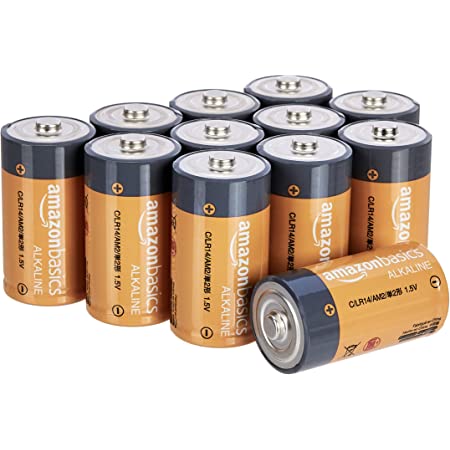
Commonly known as R14 battery, C battery is another cylindrical battery. It is larger than AA and AAA sizes. C batteries are the standard size for dry cells and offer 1.5V nominal voltage. Both primary and secondary batteries are available in C size.
Alkaline, Lithium, NiMH, and Carbon Zinc are available in C size among which alkaline and lithium are the most common. The life and capacity of C-size batteries slightly vary with respect to the battery chemistry. The maximum number of recharge cycles is up to 100, making it a sustainable choice.
Applications
Size C batteries are usually preferred for medium current drain applications like toys, musical instruments, and flashlights. The capacity of these batteries is at least 3800 mAh which is sufficient to power strong torches for up to 6 long hours.
D battery
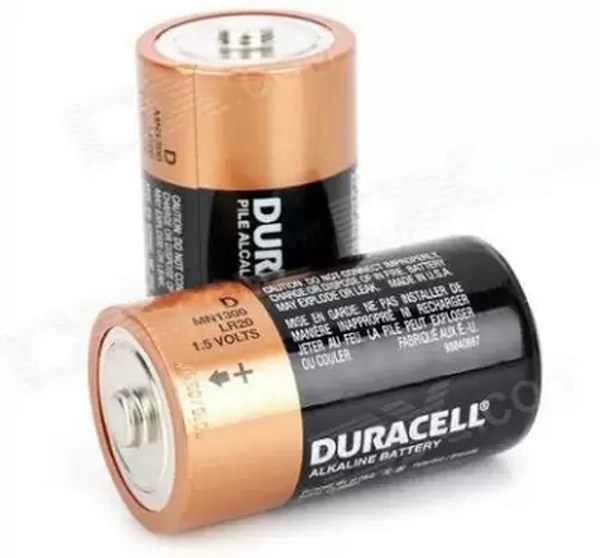
Size D batteries are often known as D Cell and sometimes as IEC R20. This battery also comes in a cylindrical shape and is one of the largest cylindrical batteries in use. It delivers a nominal voltage of 1.5V. But the nominal voltage and battery capacity vary slightly based on the cell chemistry.
Both rechargeable and non-rechargeable batteries are manufactured in D Size. It includes Alkaline, NiCd, NiMH, NiOOH, and Carbon Zinc batteries.
Applications
D Size batteries are useful in low as well as high-drain devices. The low current drain applications of D-size batteries are torches, remotes, digital cameras, audio equipment, etc. Large flashlights, radio transceivers, safety systems, and systems with long run times are the high drain devices. The capacity of these batteries is in the range of 1000 – 2000 mAh.
9V battery
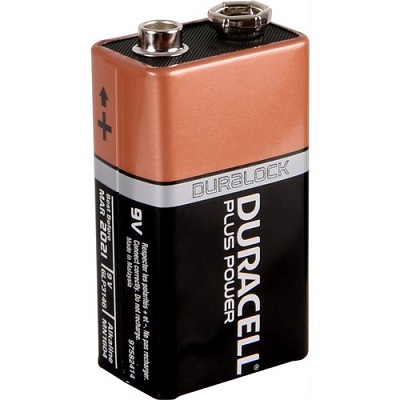
Size 9V batteries are also known as PP3 batteries. In some places, these batteries are called ‘Transistor Batteries’. Apart from the usual cylindrical shapes, these batteries have the shape of a rounded rectangular prism.
The positive and negative terminals are at the same end. As it is very evident from the name, the nominal voltage of these batteries is 9V and is used in high-power applications.
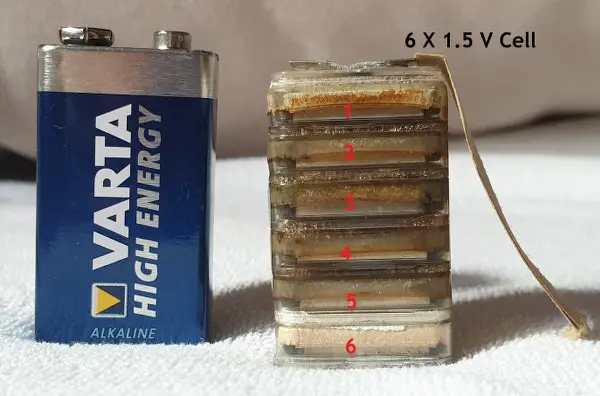
Six alkaline or carbon-zinc batteries of 1.5V are arranged in series inside these batteries. The individual batteries might be AAAA cells but it varies according to the brand. Alkaline, NiCd, NiMH, Lithium Ion, and Carbon Zinc are the primary and secondary battery chemistries available in 9V.
Applications
The major applications of 9V batteries include smoke detectors, battery-powered temperature alarms, infrared thermometers, electronic portion scales, walk-in coolers, etc that encounter extreme temperatures. It is capable to withstand 0 to 130 degrees Fahrenheit with outstanding performance throughout.
CR123A battery
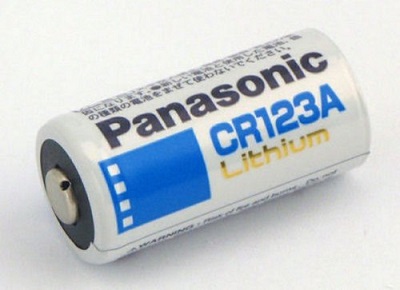
CR123A is the well-known ‘Camera Battery’. They are cylindrical and are relatively small in size. The other denominations for these batteries are 2⁄3A, 123, CR123, 17345, 16340, CR17345, 5018LC, etc. The nominal voltage is 3V and delivers a huge amount of power. Only some secondary batteries like Lithium and Lithium Ion batteries are found in size CR123A.
Applications
These are the best choice for power cameras. The other applications include tactical types of equipment, wireless security, home automation, etc. The power-to-size ratio of these batteries is very good and has a remarkably long shelf life.
Button cell (CR2032)
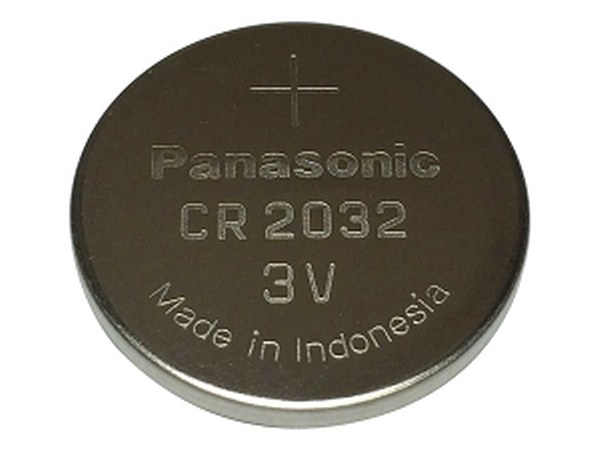
CR2032 is one of the most popular button cell types. A button cell is a small, cylindrical battery that is used in a variety of electronic devices. While button cells come in a variety of sizes, they all have one thing in common: they are significantly smaller than traditional batteries. As a result, button cells are often used in devices that require a compact power source.
CR2032 is one such type of cell and is rated at 3V. Its weight-to-power ratio is very high. Only Lithium Ion batteries are manufactured as coin cells. Another technical name for this battery is 5004LC.
Applications
Coin cells like CR3032 are long-lasting, small in size, and offer reliable power. They are thus capable of delivering several working hours. Therefore they are highly used on wristwatch calculators, toys, and medical devices like compact thermometers.
Conclusion
Batteries are available in different sizes. Each one is designed for a particular application. The most commonly used battery is the AA battery. It is used in clocks, TV remotes, toys, as well as some other household appliances.
In some particular applications where the power requirement is more, a 9V battery is used, while in low power applications, a coin cell (CR2032) is used.
FAQs
Which battery is bigger in size C or D?
D-size batteries are bigger than C-size batteries.
What is a C-size battery?
A C-size battery is a standard cylindrical battery commonly used in various electronic devices. It is characterized by its cylindrical shape and dimensions, typically about 26.2 millimeters in diameter and 50 millimeters in length
What is the voltage of a D battery?
These batteries have a nominal voltage of 1.5V.
